The ESA/NASA Solar Orbiter spacecraft just made its historic first close pass of the Sun, which happened midday on March 26, 2022.
In the days leading up to and around ‘Perihelion passage’, teams at ESA worked intensively on an observation campaign, and all ten instruments will be operating simultaneously to gather as much data as possible.
This effort will include using its remote sensing instruments, like the Extreme Ultraviolet Imager to image the Sun, as well as in-situ instruments to measure the solar wind as it flows past the spacecraft.
Observing specific targets of scientific interest on the Sun requires close coordination between flight control teams and the flight dynamics experts at ESA’s ESOC mission control centre, in Germany, and teams at the science operations center at ESAC, in Spain.
ESA teams are using the full-disc telescopes on board Solar Orbiter to identify dynamic activity – like moving sunspots – on the surface, then will use these specific locations to calculate accurate pointing of the narrow-angle imager for later detailed observation.
Since the instruments are fixed in place to the spacecraft body, the entire spacecraft must be pointed with high precision to point to specific sunspots.
This cycle of using wide-angle images to select specific narrow-angle targets, then feeding the needed pointing back into flight control instructions takes place daily, with each iteration taking three days from initial imaging to uplink of new pointing instructions.
While such close coordination happens throughout the mission, the cycle is much speeded up during perihelion passage to ensure the best possible scientific value from ‘up close’ to the Sun.



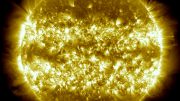
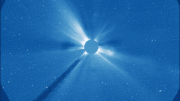

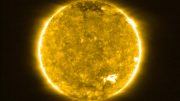
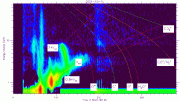
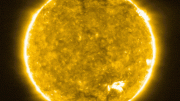
Be the first to comment on "Solar Orbiter: Tracking Sunspots Up Close"